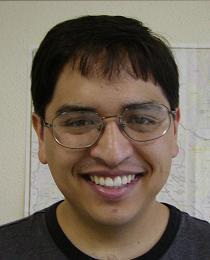First observation of a new class of rare "penguin decays" reported
Graduate student Kurtis Nishimura reported the observation while working on the Belle experiment
University of Hawaiʻi at MānoaContact:
Thomas Browder, (808) 956-2936
Professor, Physics and Astronomy
Gary Varner, (808) 956-2987
Associate Professor, Physics and Astronomy
Professor, Physics and Astronomy
Gary Varner, (808) 956-2987
Associate Professor, Physics and Astronomy
Posted: Dec 7, 2010
Kurtis Nishimura, a graduate student at UH Mānoa in the physics and astronomy department working together with other University of Hawaiʻi colleagues on the Belle experiment at the KEKB factory in Tsukuba, Japan, reported the first observation of a new class of rare "penguin decays" of the beauty quark in the November 5 issue of Physical Review Letters (PRL), the leading U.S. physics journal. Nishimura is the first author of this paper, which was the basis for his PhD dissertation.
B Factories are high energy particle accelerators that produce particles containing b (beauty) quarks in large numbers, over 100 million/year. The Belle experiment at KEKB is most celebrated for its critical role in experimentally verifying the theoretical scheme for matter-antimatter asymmetry of Kobayashi and Maskawa, who were awarded the 2008 Nobel Prize in Physics.
Other UH Mānoa participants in Belle include faculty members Tom Browder, Mike Peters, Sven Vahsen, Gary Varner, research professor Michael Jones, post-doctoral fellows Chengping Shen, Igal Jaegle, Jared Yamaoka, engineers Matt Andrew and Marc Rosen, graduate students Jamal Rorie and Himansu Sahoo. The work in the Belle experiment, an international collaboration of physicists from countries in Asia, America, Europe and Australia is supported by the U.S. Department of Energy. The UH Mānoa group is also participating in the construction of the Belle-II experiment for the Super-KEKB factory upgrade that will start operation in 2014 in Tsukuba, Japan.
For more information, visit: http://prl.aps.org/abstract/PRL/v105/i19/e191803

